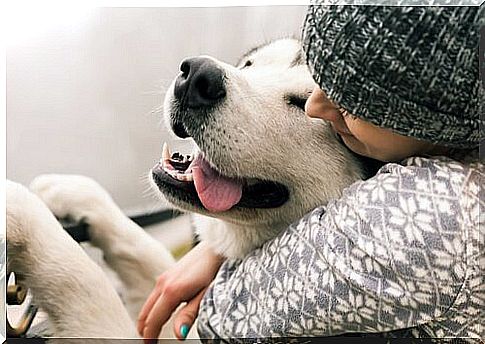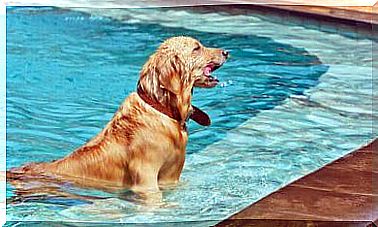Advice For Treating Anxiety In Dogs

Dogs feel and suffer in a similar way to humans. A bad experience from the past or an unexpected or stressful situation can trigger an anxiety attack in dogs. Knowing how to prevent our animal from going through this and identifying the symptoms is crucial to ensure its well-being. So today we will bring you advice to calm a dog with anxiety.
Fear, Phobias and Anxiety in Dogs
Fear is a response of the autonomic nervous system, the part of the nervous system that controls involuntary actions, as opposed to the somatic nervous system.
The involuntary response generated by the autonomic nervous system can trigger a so-called fight-or-paralysis reaction, a physiological response to an imminent attack or threat.
This type of behavior appears to ensure the animal’s survival in dangerous situations. With fear, the body reacts with this syndrome and prepares the subject to fight or flee in the shortest time possible.
When the fear turns out to be persistent or only appears in the face of a concrete stimulus, we can start talking about phobias. Sometimes, a phobia can go so far as to trigger a response in the animal simply by being placed in certain types of places or having contact with objects related to it.

Anxiety arises with anticipation of future dangers from the unknown and the imagination. Triggers physical and psychological reactions related to fear. The most common in dogs usually happens with separation from its owner for long periods.
Anxiety-related causes and symptoms
The fears and phobias of each individual have an eminently subjective character, which complicates their classifications. Some of the most common causes are these, listed below:
- Suffering from a painful illness or injury can increase an animal’s anxiety levels and contribute to the development of fears, phobias or anxiety.
- A change in the nervous system brought on by age or infectious diseases of the central nervous system can lead to behavioral problems, including fears, phobias, or anxiety.
- A very traumatic experience can leave sequelae in the animal’s psyche that provoke anxiety attacks in similar situations, or with places and people related to them.
- The repeated abandonment of an animal often brings the familiar separation anxiety. This problem is very common in animals that have entered and left protective entities many times.

If in your pet’s past there are some of these terrible experiences, your dog will be more likely to develop a frightened and dependent personality, or to suffer an anxiety attack at some point in his life. Identifying when this anxiety attack happens can save your pet’s life.
- Minor fears or startles can lead to tremors, tail twitching, loss of energy, and avoidance behaviors.
- In panic situations , the dog will run to safety and may develop self-destructive behaviors.
- In extreme cases, a reaction takes place in the sympathetic nervous system, which is part of the autonomic nervous system, mentioned earlier. Diarrhea or urinary incontinence are often the most common outward signs.
Treatment and Prevention of Anxiety in Dogs
Few people know that anxiety in dogs is diagnosed at the veterinarian’s visit, and that medication is available to treat its symptoms. If they persist and endanger your dog’s life, this is the most effective measure for him to feel at peace.
The simplest prevention measures include not exposing your pet to situations or elements that have already triggered anxiety episodes. If such exposure is unavoidable, try to soothe him with affection and rewards and get him away from the source of stress as soon as possible.









